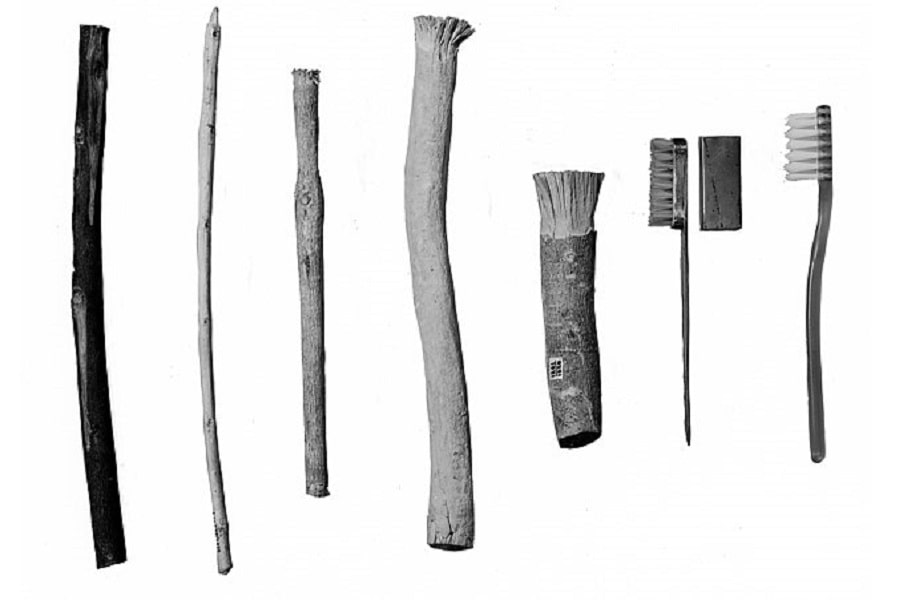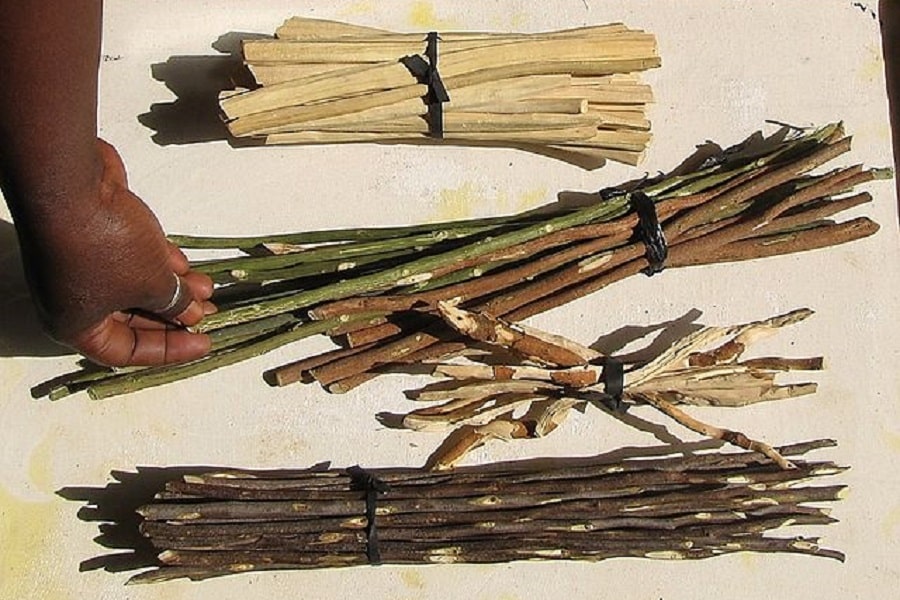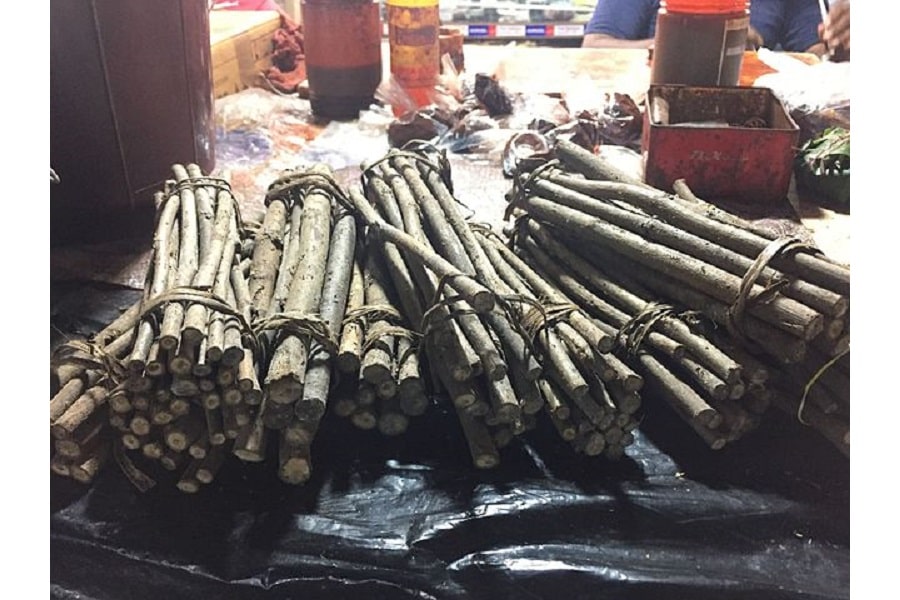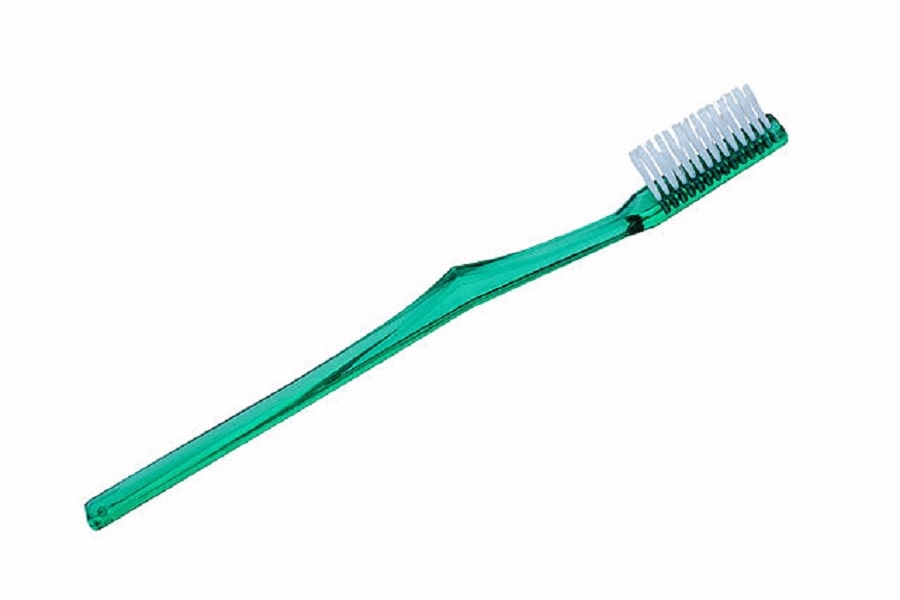The first modern toothbrush was designed by an Englishman named William Addis in 1780. It had a handle carved from cattle bone and bristles made from pig’s hair. However, this does not mean that humans did not clean their teeth before 1780. In fact, bristle toothbrushes had also existed long before William Addis.
Table of Contents
Who Invented the Toothbrush and When Did Humans Start Brushing Their Teeth?

Although the first form of a modern toothbrush, with bristles made of pig’s hair, was invented in 1938 by a man named William Addis, the concept of using a tool to clean teeth dates back much further, with evidence of chewing sticks being used for oral hygiene in ancient civilizations.
The first toothbrush with bristles made from animal hair appeared in China during the Tang Dynasty. Archeological evidence of ancient toothbrushes has been found at various sites and the design of the toothbrushes has evolved since, with a variety of materials and shapes being used.
READ MORE: A Full Timeline of Chinese Dynasties in Order
Ancient Babylon and Egypt
The early toothbrush invented by humans would have been the frayed twigs and sticks used by the people of ancient Egypt and the Babylon Empire. These devices, used to clean teeth, were called tooth sticks. In 3500 BCE, the Babylonians and Egyptians started using twigs with frayed ends for their teeth.
We know of the existence of such products because the ancient Egyptians were absolutely obsessed with preserving their items for the afterlife. Toothsticks have been recovered in tombs dating back thousands of years. These tools were quite primitive, in comparison to modern toothbrushes, but could perhaps be called the first toothbrush in the world. The Chinese then improved upon the design.
READ MORE: The Egyptian Afterlife: Mummification, Burial Practices and Beyond

Ancient China
A bristle toothbrush is one of many ancient Chinese inventions. Records of a device called a chewing stick date back to about 1600 BCE. But the first of these may actually have been created in the 1400s. The handles were made of either bone or bamboo. The bristles were made of pig hair.
When the Europeans adapted these tools from the Chinese, they began using horse hair because they preferred that to pig hair. Some even used feathers. Needless to say, these ancient products were not as clean as modern toothbrushes with their nylon bristles.
They were not even as hygienic as tree twigs would have been. Chewing sticks made from aromatic twigs could even help cure bad breath.
Ancient India
Ancient Indian and South Asian cultures used neem twigs to clean their teeth. The method here wasn’t to brush teeth as such. Rather, people would chew on the end of neem twigs until they frayed and formed natural bristles. These were then used to clean teeth. This meant that they had no need for separate toothpaste of any kind.
Neem also has medicinal properties and helped freshen breath and prevent plaque, cavities, bacteria, and tooth decay. Current research supports this claim. Thus, using neem twigs as oral hygiene products would benefit people even today. Another such plant that was also used as a toothbrush was the miswak.

The First Mass Produced Toothbrushes
The first mass-produced toothbrush was created by William Addis. This is why he is usually considered the inventor of the toothbrush. It was made in 1780. While it did not have the nylon bristles the later variations of the toothbrush did, it was certainly an improvement on European dental health before that.
Addis was the first person to begin a toothbrush company and started the mass production of toothbrushes. Other entrepreneurs added improvements and carried on his work.
Why Did William Addis Invent the Toothbrush?
William Addis was an Englishman born somewhere around London in 1734. In 1770, Addis was imprisoned for causing a riot. While he was in prison, he washed his teeth with a rag, some soot, and some salt. This was the standard method throughout Europe and had been so for centuries. He watched a man using a broom to sweep the floor and decided that there could be a better way of cleaning teeth.
What Did The First Toothbrush Look Like?
Addis saved a small animal bone from one of the meals that he was given. Then, he drilled small holes into one end of the bone. He obtained some pig bristles from his guards, tied them into little tufts, and stuck them through the holes with some glue. This was the original toothbrush invented in Europe.
Once he was released from prison, he began a business manufacturing toothbrushes. Addis began the first mass production of toothbrushes in the world. He became very rich before his death in 1808 and passed on the company to his son. Now called Wisdom Toothbrushes, it still manufactures millions of toothbrushes in a year in Britain.

Evolution of the Toothbrush
The history of the toothbrush then saw some rapid evolution in Europe and America. While the handle has definitely changed over the years, it was in the area of bristles that the toothbrush went through major changes. Later variations of the toothbrush invented in the 1900s started using synthetic fibers for their bristles. A toothbrush with a plastic handle was first created in 1927.
World War II soldiers and their concern with dental health also greatly influenced the general public. In the post-World War scenario, people became much more aware of the importance of taking care of their teeth and mouth. They began to use new and updated toothbrushes and change them frequently.
Hundreds of toothbrush companies exist in the world today. They are constantly updating their products. Now we get both manual and electronic toothbrushes, charcoal toothbrushes, and all kinds of angled and curved toothbrushes for better reach.
Bristles
When mass production of toothbrushes began in the United States, they generally used Siberian boar bristles. These bristles were the stiff, coarse hairs found on the back of a hog. Before this, Addis had used horse hair, pig hair, and feathers in his toothbrushes. These natural animal bristles were not the best material. They did not dry properly and retained too much bacteria. They were better than cloth but not by much.
In 1938, nylon bristles were introduced by Dupont de Nemours. By the 1950s, nylon had become the norm. The handles were being made with thermoplastic materials. The bristles were also placed in rows of three and closer together than they had been before.
This arrangement was better suited to remove plaque. Generally, the outer bristles are longer and softer than the inner bristles. This helps remove plaque around the gum tissue areas without hurting them.

Toothbrushes Today
While manual toothbrushes have been the norm for centuries, electric toothbrushes have become very popular recently. A toothbrush today also has curved and angled heads that can better reach the back teeth. Some modern toothbrushes have charcoal bristles, which are supposed to be very good for whitening teeth.
Buying chewing brushes for babies as soon as they develop their milk teeth is considered absolutely necessary. We teach our children at a young age about the importance of oral health and brushing twice a day. Routine dental check-ups are imperative.
However, the fact that the handles of so many toothbrushes are made of plastic is a big problem today. Since a toothbrush needs to be frequently changed, this means a huge amount of plastic going into landfills regularly. Thus, plant-based toothbrush handles, like bamboo, are becoming more common.
When Was the First Electric Toothbrush Made?
The first electric toothbrush was made by Tomlinson Moseley and a patent for the electric toothbrush was filed by his company, Motodent Inc, on December 13, 1937. Electric toothbrushes generally make automatic back-and-forth oscillation and rotation motions to clean our mouths. The motions are usually made with motors powered by rechargeable batteries.
Electronic toothbrushes come in a variety of styles. Technically they are supposed to be more effective than manual brushes but most studies record equivalent performances. They are also, unfortunately, both more costly and damaging to the environment.
READ MORE: The History of Dentistry from Ancient to Modern Times